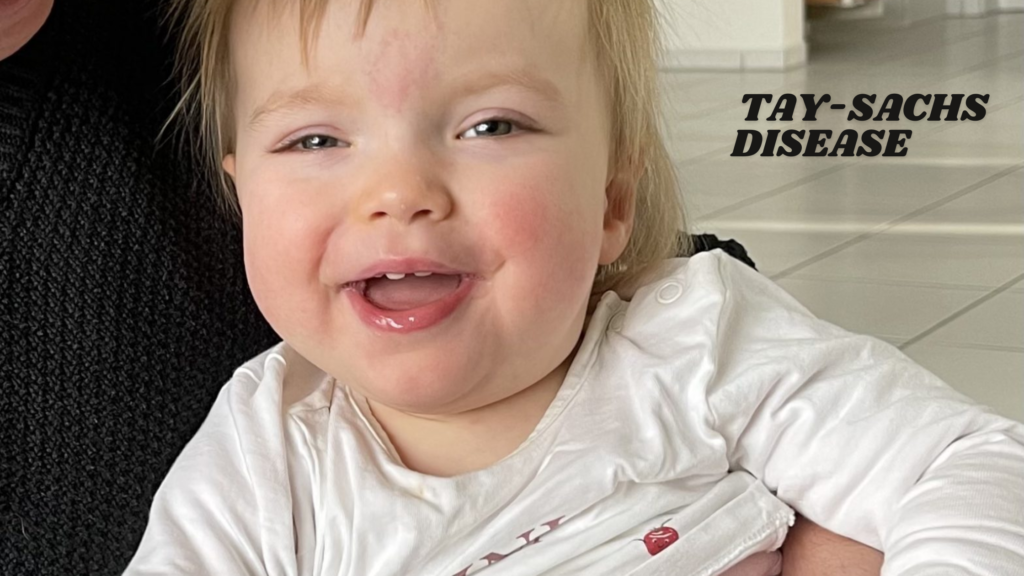🧠 Tay-Sachs Disease
Overview
Tay-Sachs disease is a rare, inherited genetic disorder that destroys nerve cells (neurons) in the brain and spinal cord. It is most commonly seen in infants, though rarer juvenile and adult-onset forms also exist.
🧬 Cause
- Tay-Sachs is caused by a mutation in the HEXA gene on chromosome 15.
- The HEXA gene makes part of an enzyme called beta-hexosaminidase A, which helps break down a fatty substance called GM2 ganglioside.
- Without this enzyme, GM2 builds up in the brain, causing progressive damage to nerve cells.
🧬 Inheritance
- Tay-Sachs is autosomal recessive:
- A child must inherit two defective copies of the HEXA gene (one from each parent) to have the disease.
- Carriers (with one defective gene) have no symptoms.
🌍 Who Is Affected?
- Most common in:
- Ashkenazi Jewish populations
- French-Canadian, Cajun (Louisiana), and some Irish populations
- Occurs in about 1 in 320,000 live births (varies by population)
🧒 Symptoms
Infantile Tay-Sachs (most common and severe form)
- Symptoms appear at 3 to 6 months of age:
- Loss of motor skills (e.g., turning over, sitting)
- Exaggerated startle response
- Weakness
- Seizures
- Vision and hearing loss
- Paralysis
- Cherry-red spot in the eye (seen on eye exam)
- Progression is rapid. Children usually become blind, deaf, and unable to move.
- Most children with the infantile form die by age 4–5.
Juvenile Tay-Sachs
- Onset between ages 2 and 10
- Slower progression but similar neurological symptoms
- Life expectancy: mid-teens to early adulthood
Adult/Late-Onset Tay-Sachs
- Very rare
- Milder symptoms: muscle weakness, coordination problems, psychiatric issues
- May not significantly shorten lifespan
🔬 Diagnosis
- Enzyme test: Measures beta-hexosaminidase A activity (very low or absent in affected individuals)
- Genetic testing: Confirms mutations in the HEXA gene
- Carrier screening: Especially recommended for individuals in high-risk populations
💊 Treatment
- No cure
- Treatment is supportive and palliative:
- Seizure control
- Nutritional support (feeding tubes in later stages)
- Respiratory care
- Physical therapy
Research and Experimental Approaches:
- Gene therapy and enzyme replacement therapy are in development but not yet widely available.
- Clinical trials are ongoing.
🧬 Prevention
- Carrier screening and genetic counseling are essential, especially in high-risk populations.
- Preimplantation genetic diagnosis (PGD) and prenatal testing are options for at-risk couples.
📘 Summary
| Feature | Description |
|---|---|
| Cause | Mutation in HEXA gene (enzyme deficiency) |
| Inheritance | Autosomal recessive |
| Onset | Typically 3–6 months (infantile form) |
| Key Symptoms | Neurological decline, seizures, cherry-red spot |
| Life Expectancy | ~4–5 years (infantile); longer for juvenile/adult |
| Treatment | Supportive care only; no cure |
